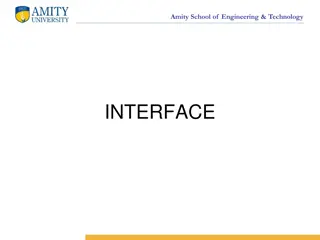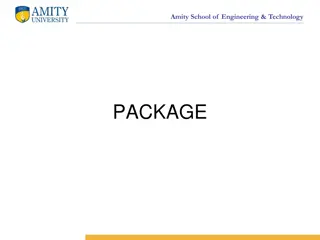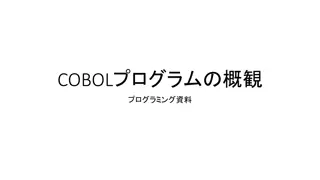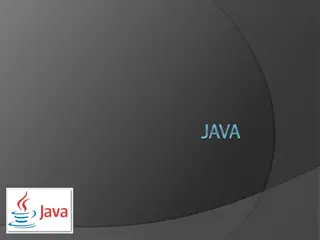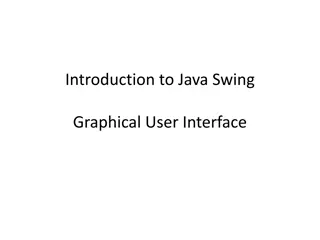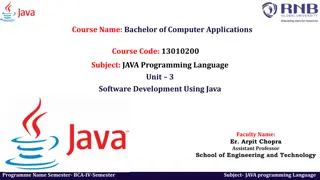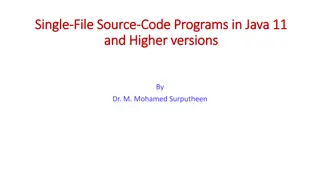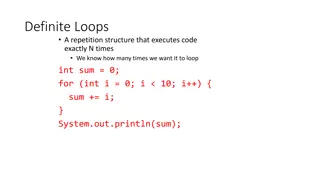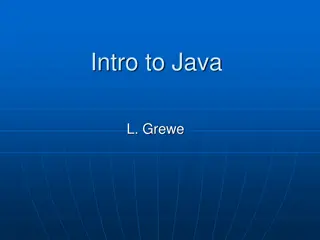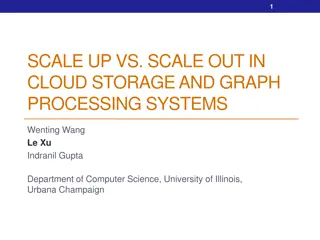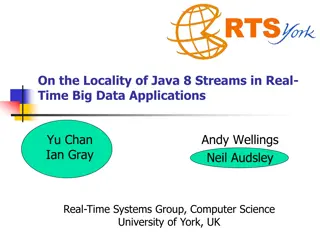Pitfalls in Large-Scale Java Applications Translated from COBOL
Uncovering the challenges in migrating legacy COBOL applications to Java, this presentation delves into the structural issues, performance bottlenecks, and translation problems encountered in the process. Highlighting the difficulties in maintaining and optimizing code, it emphasizes the need for skilled programmers and meticulous corrections to ensure smooth modernization.
Download Presentation

Please find below an Image/Link to download the presentation.
The content on the website is provided AS IS for your information and personal use only. It may not be sold, licensed, or shared on other websites without obtaining consent from the author. Download presentation by click this link. If you encounter any issues during the download, it is possible that the publisher has removed the file from their server.
E N D
Presentation Transcript
Performance Pitfalls in Large-Scale Java Applications Translated from COBOL Presented By: Toshio Suganuma Toshiaki Yasue Tamiya Onodera Toshio Nakatani NawrasAlkassab Natasha Delahunt Marcos Moraes VaishnaviSunku
Legacy transformation: Adaptation to modern Web-based service-oriented architecture (SOA) difficult to find skilled COBOL programmers Introduction Conversion from COBOL to java Need to translate large-scale legacy mainframe applications corrections and fine tuning are applied by hand
Structure of COBOL Program COBOL Drawbacks of this structure No dynamic allocation of data Single thread of execution
Structural issues are categorized as Impedance mismatch Inappropriate program conversions Technical Problems are categorized into four eager object allocations exceptions in normal control flows, reflections in common paths inappropriate use of the Java class library Overview of Problem
Identify performance bottlenecks and pitfalls that easily slip into large scale Java applications translated from COBOL Detailed experimental evaluations showing significant performance overheads caused by those problems Major Contributions
Cobol History Cobol60 -1959 Limitations of Current Solutions Limitations Memory allocation High cost to maintaining the mainframes Lack of developers
Software Mining Translator. How it works? Limitations of Current Solutions
Software Mining Translator. How it works? Limitations of Current Solutions
Translation problems Convert Variables Typed x Untyped Fix converted and complete the code Documentation Long-term Maintanence Limitations of Current Solutions
Technical Limitations Closer look at COBOL
Technical Limitations
Technical Limitations
Technical Limitations Eager Object Allocations String initialization and reinitialization
Technical Limitations
Authors solution: Technical Limitations
Eager Object Allocations String initialization and reinitialization BigDecimal and its initialization Technical Limitations
Technical Limitations
Authors solution: Technical Limitations
Eager Object Allocations String initialization and reinitialization BigDecimal and its initialization Class constructor and arrays Technical Limitations
Technical Limitations Inappropriate Calls to Class Libraries
Authors solution: Technical Limitations
Authors looked into the performance problems of a large Java middleware system that was translated from an original COBOL version Fixing eager object allocations is particularly effective for large tansactions Experimental Results
As mentioned in the paper: using translators may generate a code with many bugs which opens the door for security problems. Conclusion Good (secure) COBOL code may lead to bad JAVA code, if translated using translators Security vulnerabilities and database breaches may occur.
To overcome this, the translation process can either be adjudicated by a long-term monitoring by developers Conclusion Or, the developers need to hardcode the translation by themselves ( very expensive)
Program analysis can estimate potential executions of a code (both dynamic and static) Therefore, such tools can help detecting bugs and security vulnerabilities. Implementing dynamic analysis tools on the JAVA code after translation to dynamically identify bugs during the run-time. Proposed Solution On the other hand, running dynamic analysis tool on COBOL code may give some insights and facilitate the translation procedure. For example, analyzing a COBOL code before translation. It s worth mentioning that Dynamic analysis and translation is much more complicated than static analysis.
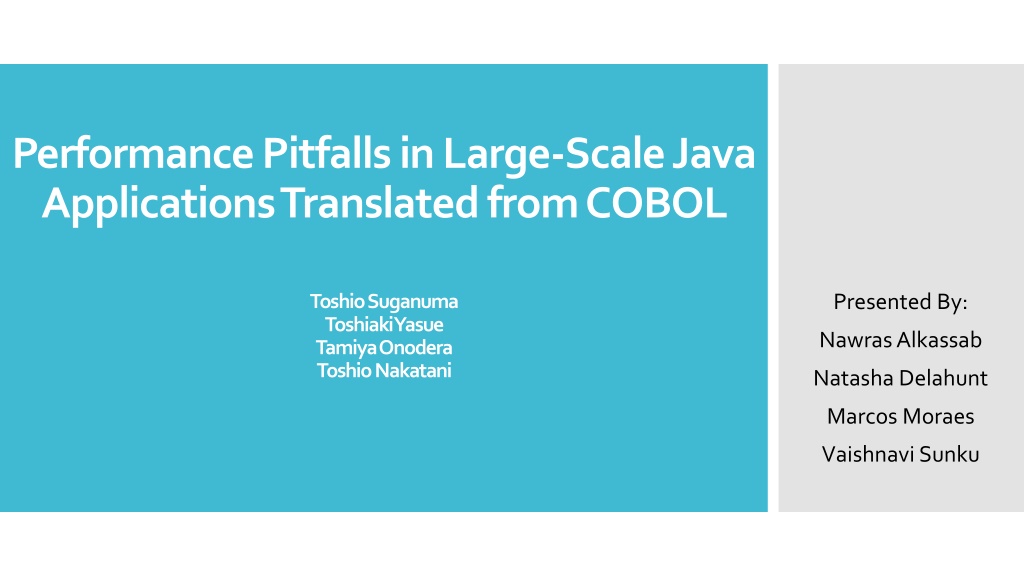
 undefined
undefined










